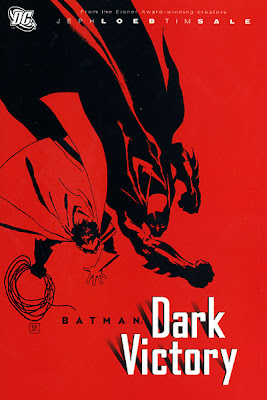The Dark Knight Strikes Again, the sequel to the classic The Dark Knight Returns, was written and drawn by Frank Miller and colored by Lynn Varley. It was originally published as a three-part series in 2001 and 2002.
The story picks up three years after the events of The Dark Knight Returns. The world has become a police-state led by Lex Luthor, and Batman is at work trying to free imprisoned superheroes and take down the corrupt government.
Strikes Again is thirty pages longer than Returns, and it feels much shorter. In Returns, every panel was carefully arranged. Here, panels are strewn about the page, and there are a lot of full-page spreads that are neither artistic nor helpful to the plot. Miller may have been trying to create a chaotic atmosphere for this one, but it all feels like filler.
On the subject of chaos, Strikes Again feels slapped together. There’s plenty going on, but there’s little development of any character other than Superman. Nothing that happens here is particularly exciting, and the ending is anticlimactic and ho-hum.
Miller’s art is significantly different here than it was in Returns. It’s more grotesque, it’s sloppier, and it’s less detailed. Many characters look like monsters. There’s a profound lack of background art, and this, combined with the lack of detail and the computer-colored backgrounds that Lynn Varley quite obviously got carried away with, makes it perfectly understandable if the reader has trouble figuring out what’s going on. About the only bright spot here is what Miller does with Plastic Man.
The Dark Knight Strikes Again feels sloppy and thrown together. It is mediocre in its own right, and looks even poorer when compared with the classic that spawned it.
NOT RECOMMENDED





